Landscaping is important, it makes our homes inviting spaces that are part of a neighbourhood. When I take a walk, of course I care about beautiful architecture, but what brings me back to a place is the vibe of the area. The plant life around a building is a necessary aesthetic. Good landscaping helps with water management, air quality, and our environment. There are lots of articles on the role natural elements play in preventing fires, keeping temperatures down in cities, and preserving infrastructure. It’s kind of interesting to realize that public infrastructure, like roads, can crumble more quickly under extreme weather conditions so investing in natural infrastructure can help our extend the life of our public infrastructures.
Anyhew, circling back to landscaping around historic buildings, here in Saint John, we have heritage designated homes but not gardens etc. Even in Saskatchewan and Vancouver (though it must be said that heritage is hated in Vancouver) there are provisions to protect heritage elements including gardens. It would be amazing for Saint John to have similar protections or incentives – it is so dejecting when a stunning historic home is surrounded by cement with no greenery.
From the late 1920s pic of our home on Alexandra St., we can see a poured cement sidewalk and a simple grassy lawn area. This picture informed our decisions as did a few other things.

First, I want our landscaping to compliment our home, provide curb appeal, and contribute to our streetscape – and this meant being as original to how our home looked in 1911, when construction was completed, as possible. Second, I want to invest in xeriscaping. Third, I want indigenous and local plants where possible – no monkey puzzle trees. Fourth, we want to save the bees (in NYC our home was designated as a bee sanctuary – no pesticides or herbicides ever used) so we want a yard that provides for them. And fifth, I am tacky AF and love colour.
I started to educate myself and toddled off to a sort of online bible – the Old House Guy. He has a great article on the history of lawns and linked to some amazing historic resources including a 1912 book on lawns and 1922 seed catalogue. These two resources are highlighted as they correspond to the age of my house and before mass use of pesticides.
We are keeping our cement walkway. No need to change at this time and it is in line with the 1920s pic of our home. We decided to keep plants from touching the house and porch directly to prevent rot – so no bushes against the house nor plant boxes although I love them. We invested in vintage cast iron flower pots and fill them up each spring with a thriller, spiller, and filler.
In front of our parlour window, we grow daffodils which bloom first and in front of the daffodils are peonies which bloom second. I am trying to get phlox to take shape in the rocks and something bright to grow to the far right of the garden area in front of the house.

Note – we had a devastation this year when our daffodils were left but all tulips eaten by deer. Not cool – looked like the garden equivalent of a mullet – see below. I will start planting daffodils everywhere, a bit like the Lake District in England, and avoid tulips on account of the deer.
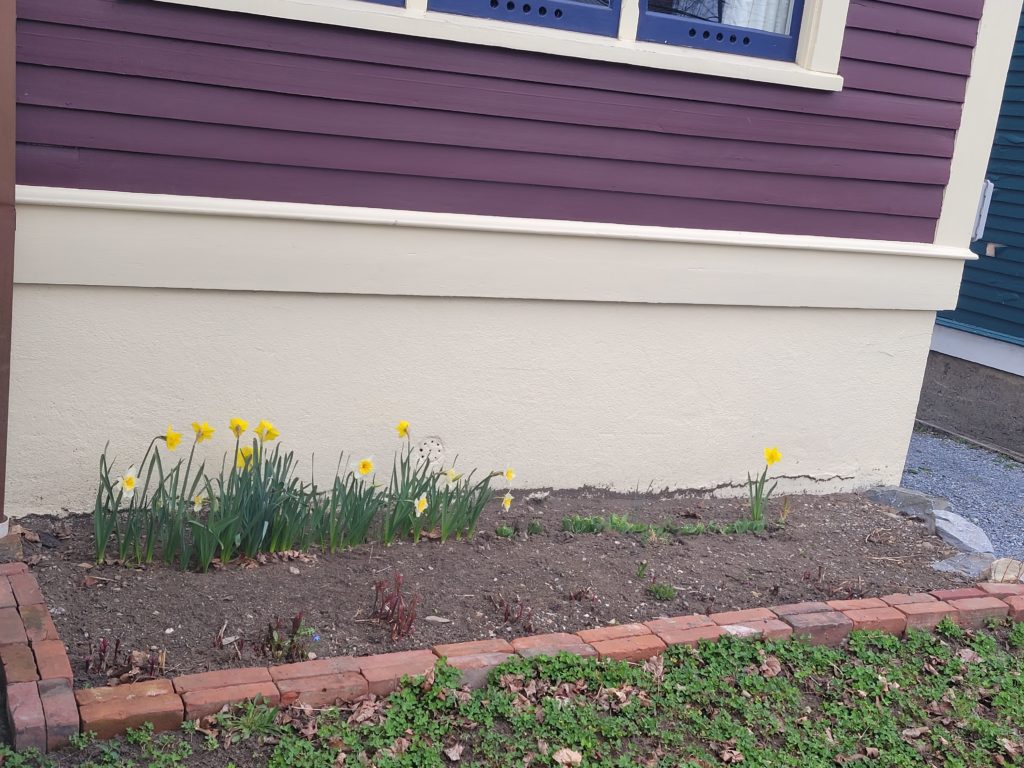
Then we did something bold. We turned our entire front yard into a clover lawn. I was scared. Here is what it looked like week 3 then week 6.
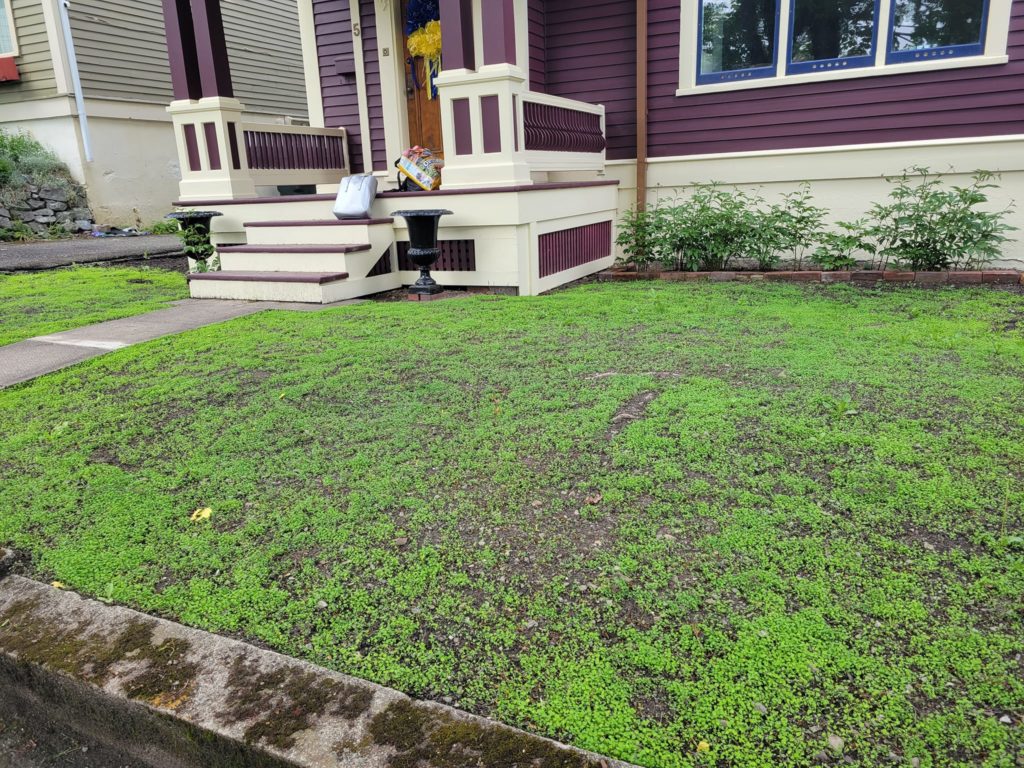
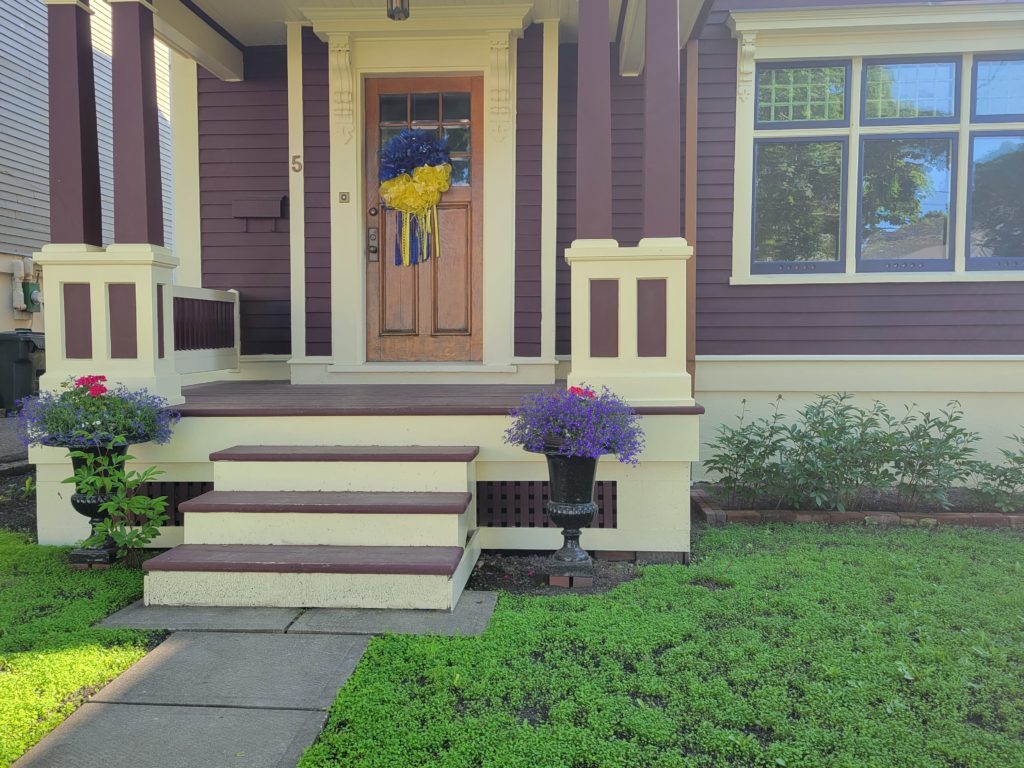
This is our second year with a clover yard and it is amazing! I bought about $6 in seeds this year and sprinkled them everywhere. Benefits – historically sound as yards have historically been made of a clover mix; no watering; minimal mowing; very green and lush; minimal maintenance; and weed preventative as clover has a tight root structure that inhibits weeds. Drawbacks – not great for high traffic areas.
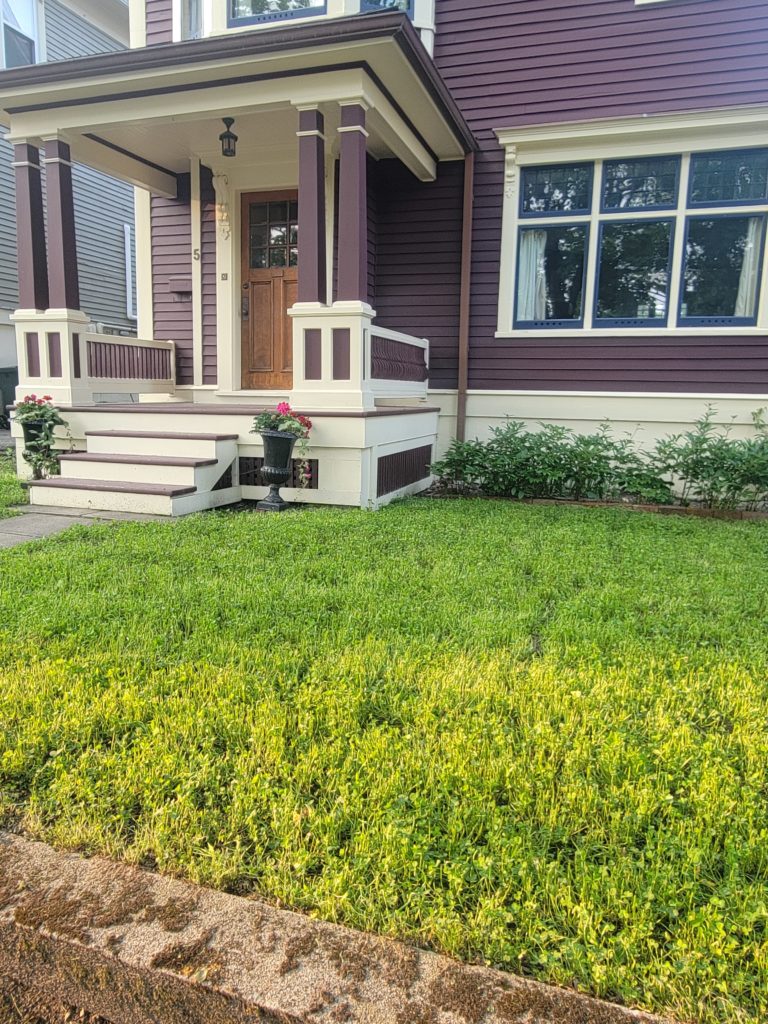
I wanted to sort of delineate our backyard so I purchased an used fence (maybe cast iron not wrought iron?) from an older home on the west side of Saint John sadly torn down, along with some railings that were used as window covers on a Germaine St. store and found in a west side garage.
Pic below of the home from the west side where much of our railings came from.

Railings being installed in our backyard.
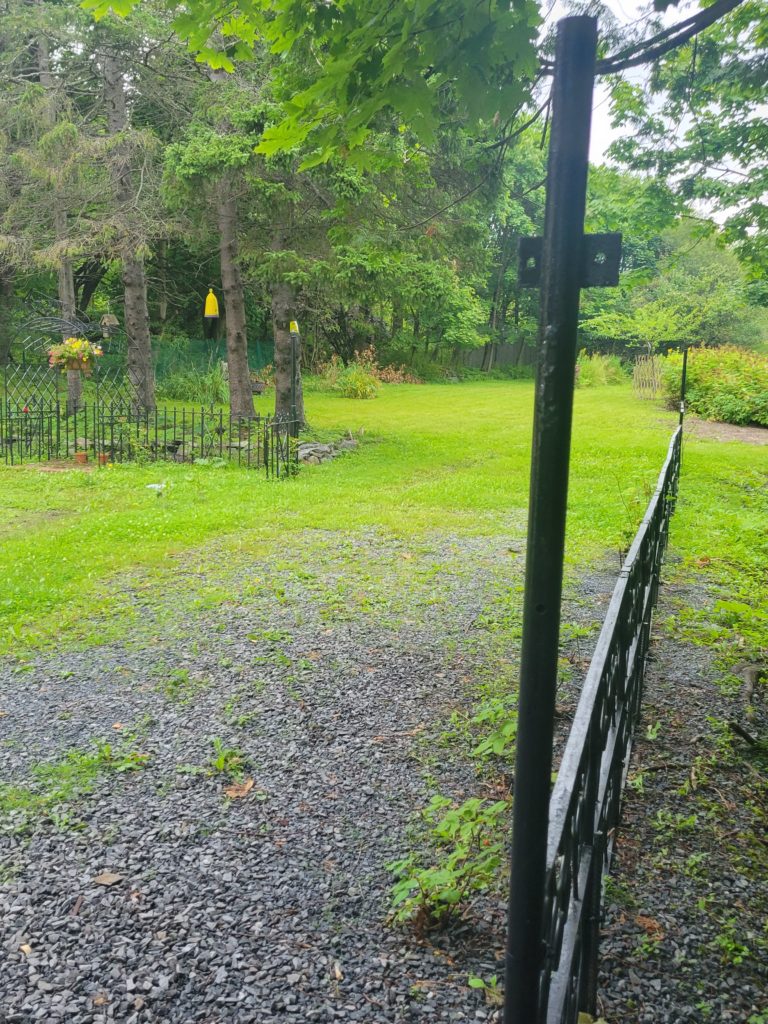
I had the fence cleaned and painted with rust preventing black paint and then placed around the perimeter of our backyard just inside our property lines. We are planting wild roses on the other side of the fencing – I figure if it can grow and thrive on the Harbour Passage where the wild roses are abused by sea salt and people, then surely the wild roses can thrive here. They are growing though I wish it was quicker. Sadly, deer are eating most of the rosebuds. We will not plant grass here and intend to encourage ajuga (bugleweed), wild thyme, and wild oregano to take hold. Here are the roses on Harbour Passage – just imagine this surrounding my yard. Someday.
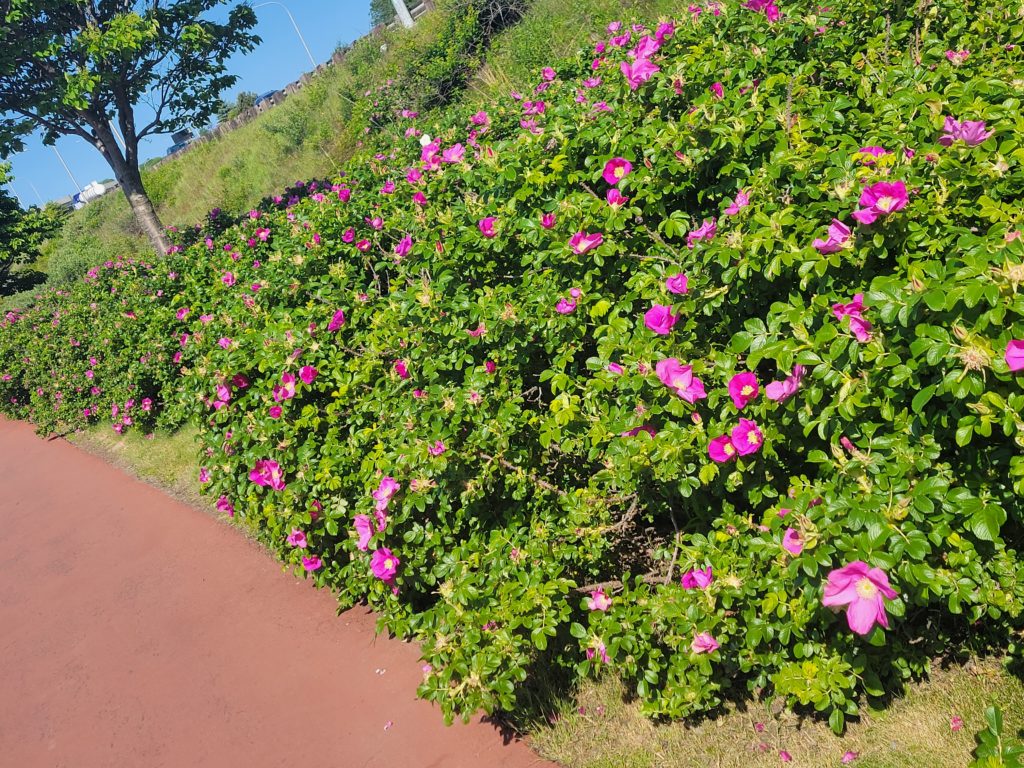
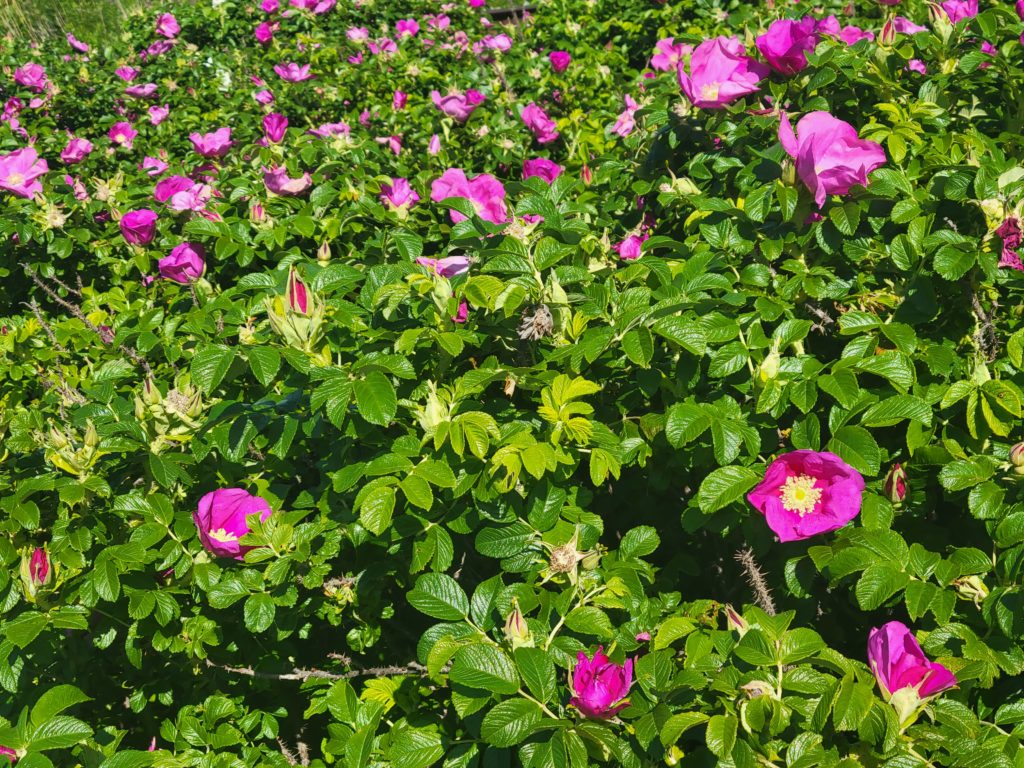
Our back deck is fairly simple – this was the intention of the Fenton company – the fancy porch, aka veranda, was out front not out back. The images below are excerpts from architectural plans from the Fenton Land and Building Company. You can see the front porch was dressed up and the back porch very utilitarian with some simple details. While these are not the plans for my home, the same company and architect designed and built my home.
front porch – side profile – very fancy IMHO
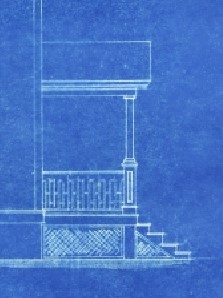
Back porch – side profile – very simple IMHO
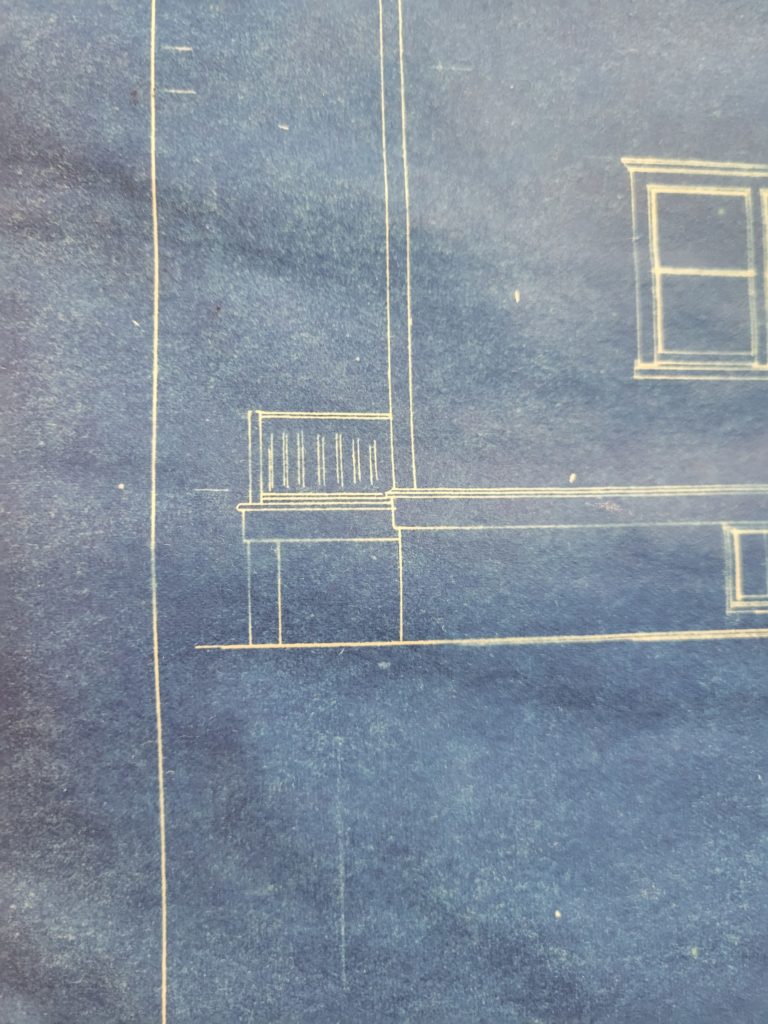
I was pretty obsessed with ensuring any finishings on our back porch were historically accurate. We were lucky the porch was there when we moved in but the railings were not all intact. I found guidance in my own city – here are some historic resources prepared by the City of Saint John to ensure your back deck and fire escapes are historically accurate with subtle details.
[as soon as our back yard is looking a bit more lush and less under construction, I will insert pics]
In the meantime, here is a pic “Manawagonish road (Mahogany road) 1912″ – Item P210\382 – Saint John, NB – from the Provincial Archives of New Brunswick. It is pretty cool to see the back porch visible, so often we do not have views of the back of homes.
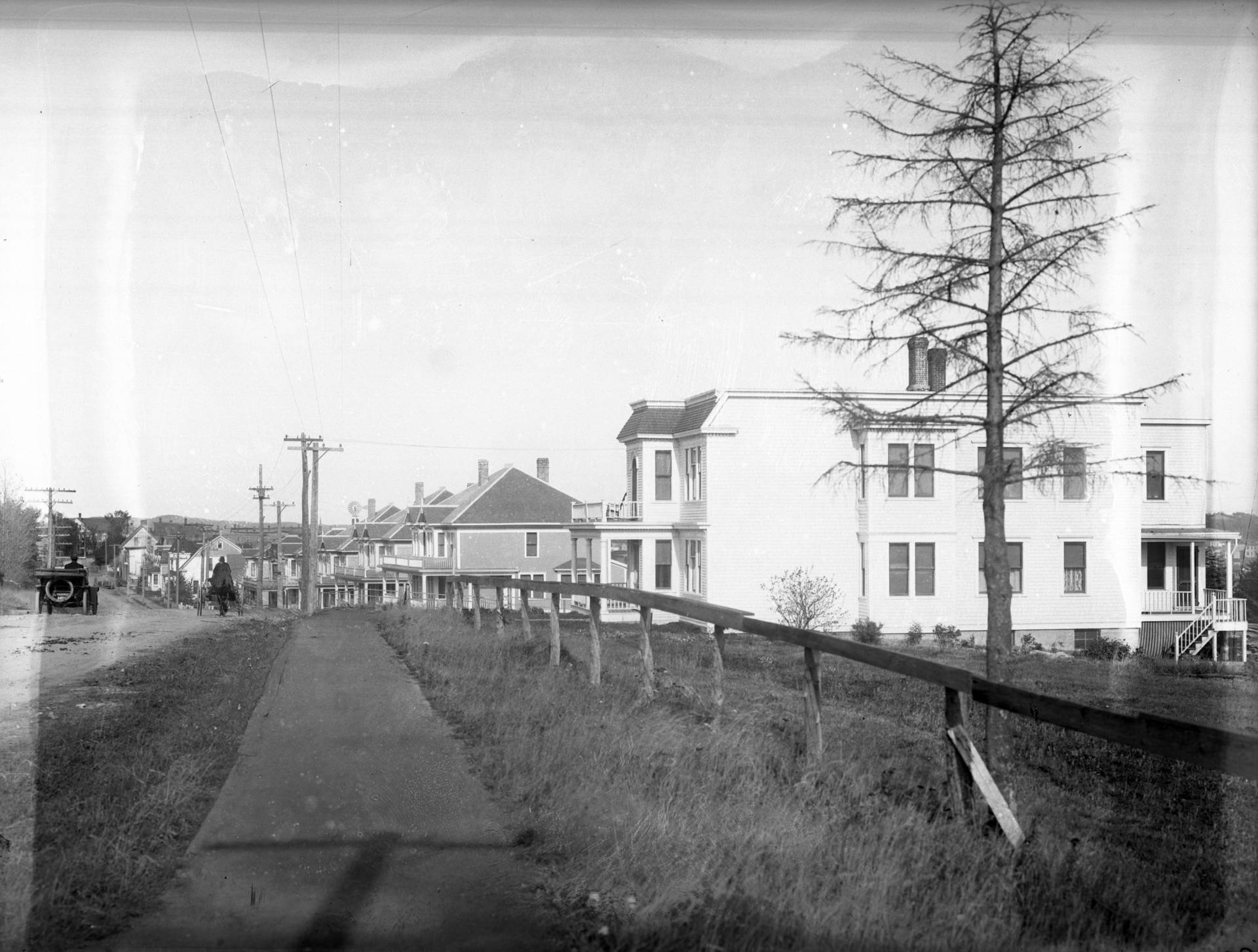
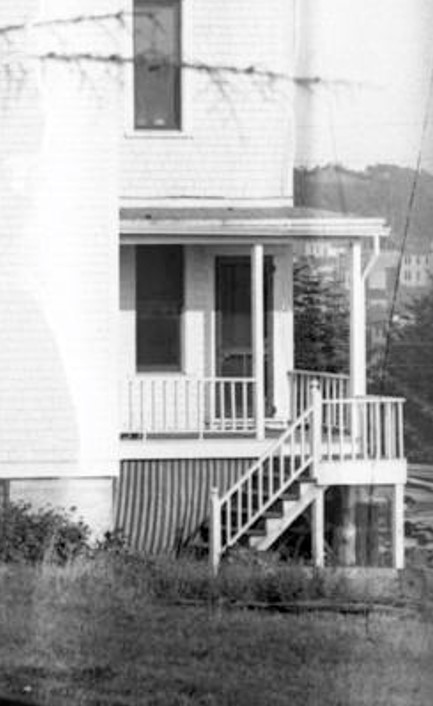
I want to take a moment here and talk about fencing. I see many homes in Saint John close to the street where there is pavement right up to the house. This is bad for the environment and bad for the look and feel of the home and the streetscape. It reminds me of when we moved to our art deco home in NYC we went to buy a push lawn mower. Mr. Bartunek told me that mowing is over and pavement is in. Joni Mitchell may have been right, we did pave paradise to put in a parking lot. Anyhew, here are examples of where fencing makes all the difference.
Below is 71 Sydney in 2013 – look at that fence!
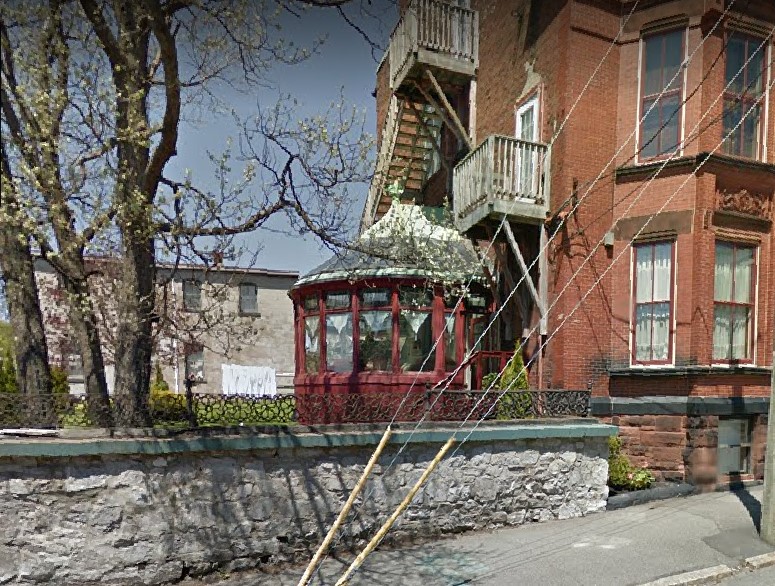
When this pic was taken in 2023, there is a modern fence installed that is not as enticing as the historic fence.
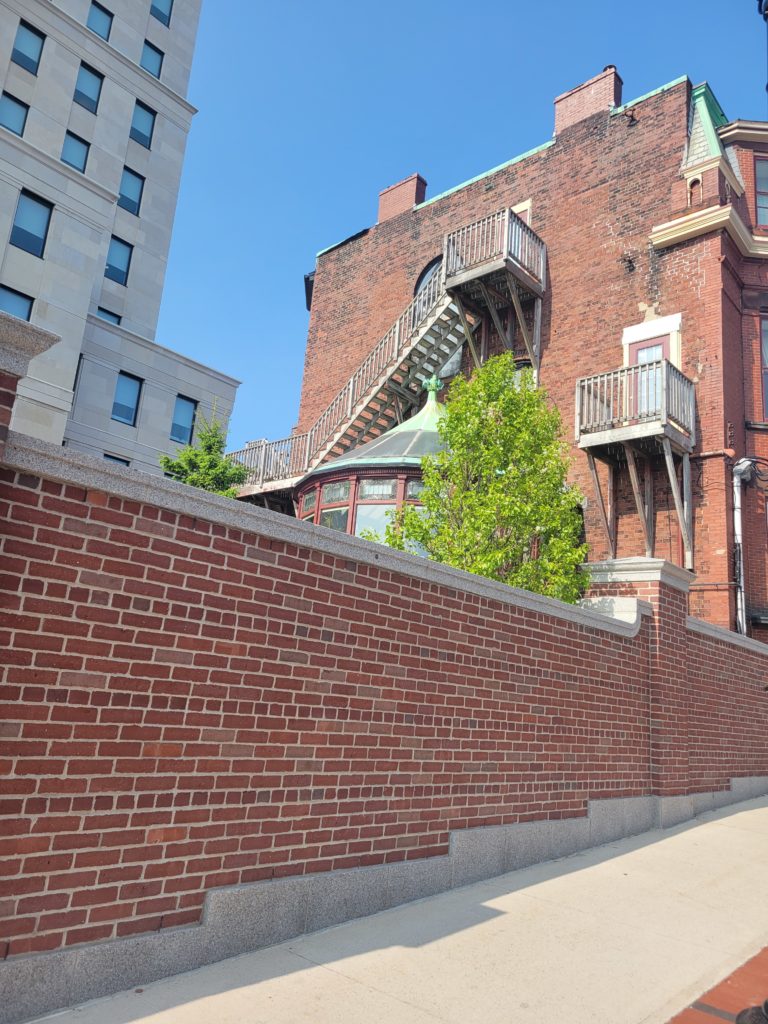
St. Peter’s Church off Douglas and Clarendon, demolished in 2022. Pic below is a postcard. Just admire how that fencing frames the church and invites you into the churchyard.
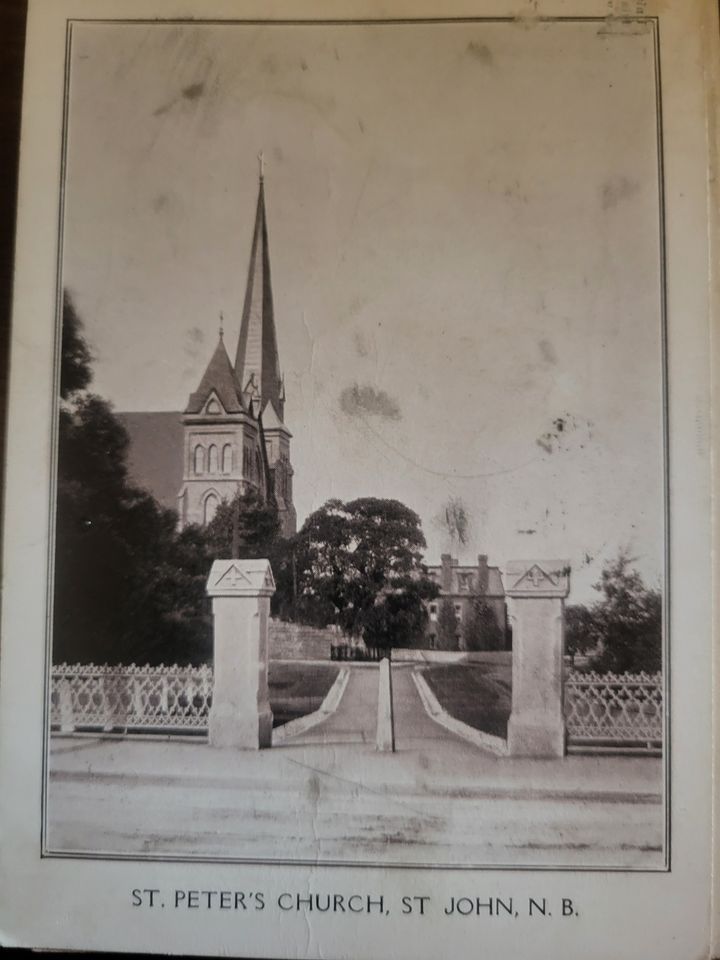
Juxtapose the image above with modern ugo fencing leading to St. Peter’s now.
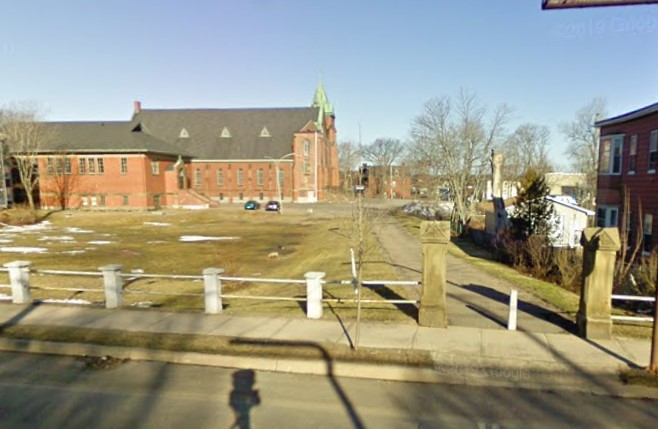
Below is 80 Main with fencing and without. Now, it feels a bit exposed and less inviting at the same time.
P210-223: Fred Secord’s house with little boy and woman on the front porch. Home of Frederic Avard Secord and Ethoria Maud (Sprague) Secord, 80 Main Street, Saint John, NB – Still standing in 2016. Taken in April of 1914.
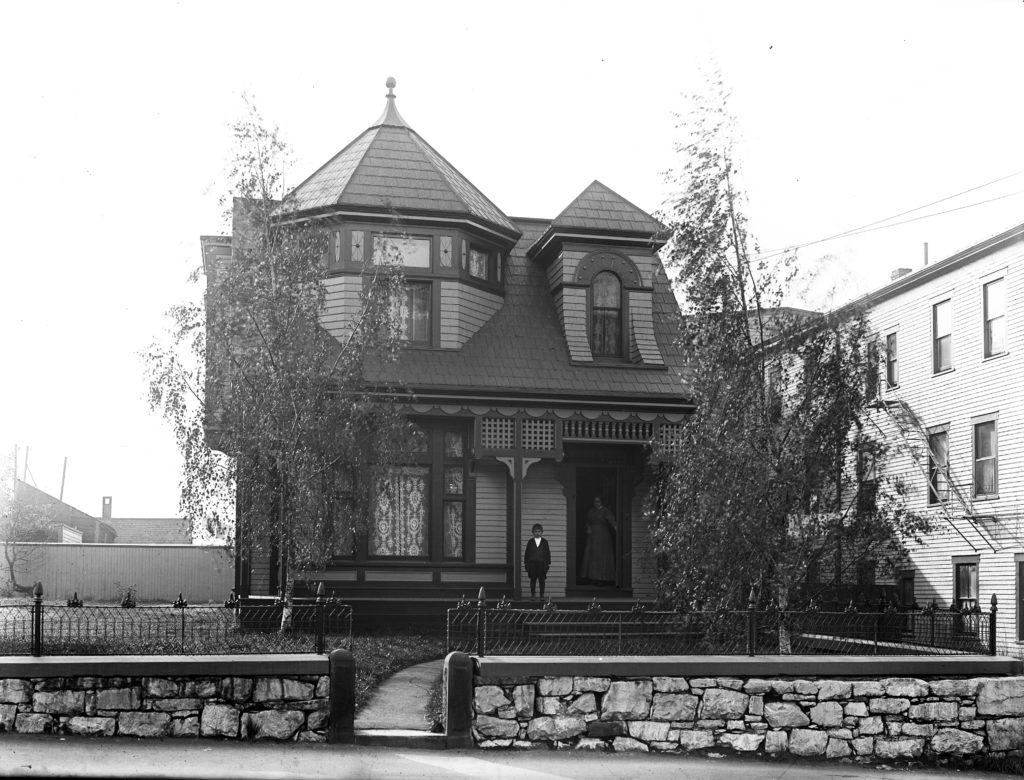
No fence at the present time, ca. 1923. The home is not well framed.
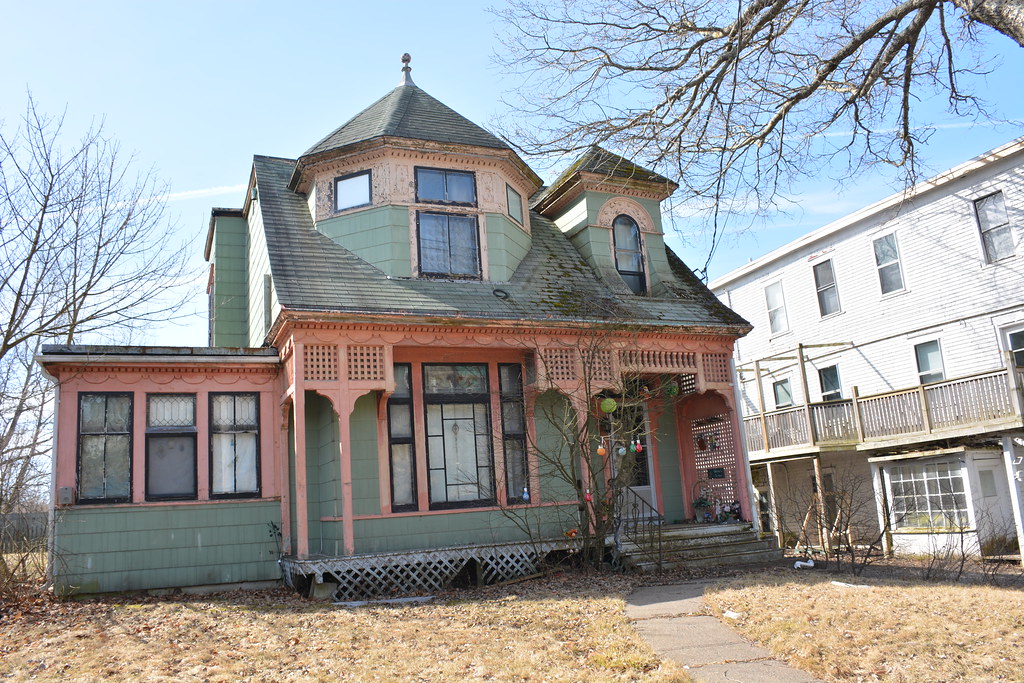
Below are examples of beautiful historic railings that still exist in Saint John that inspire me and contribute to a beautiful community like feeling when I walk by.
Charlotte St – west side (remnants)
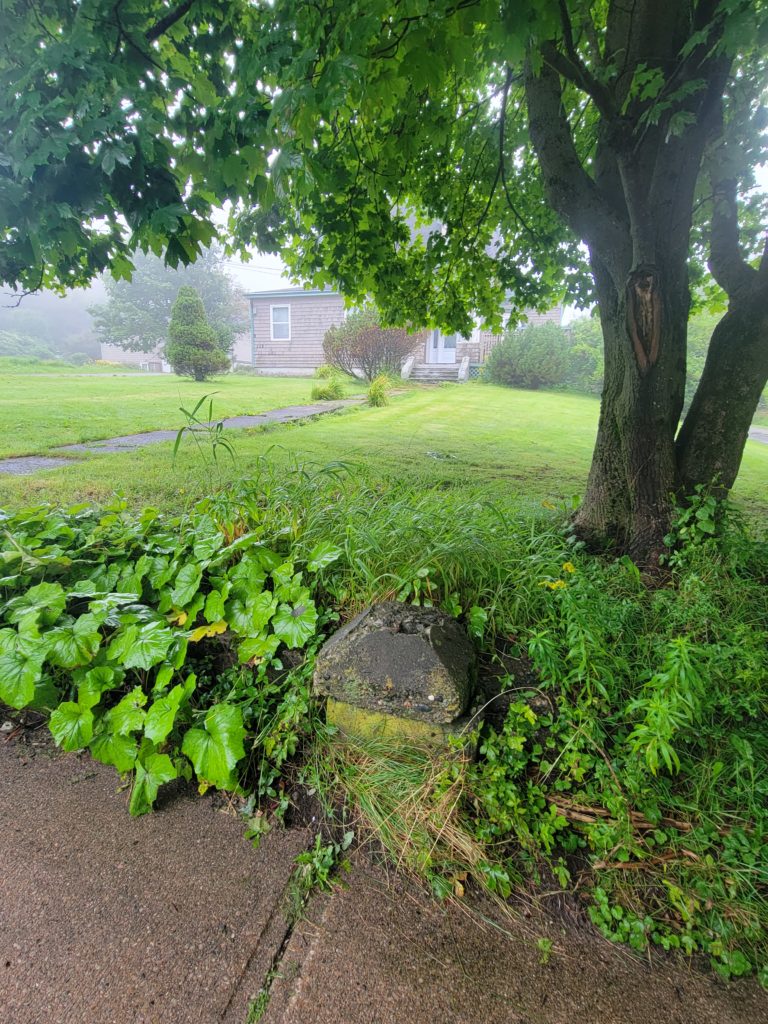
Coburg St.
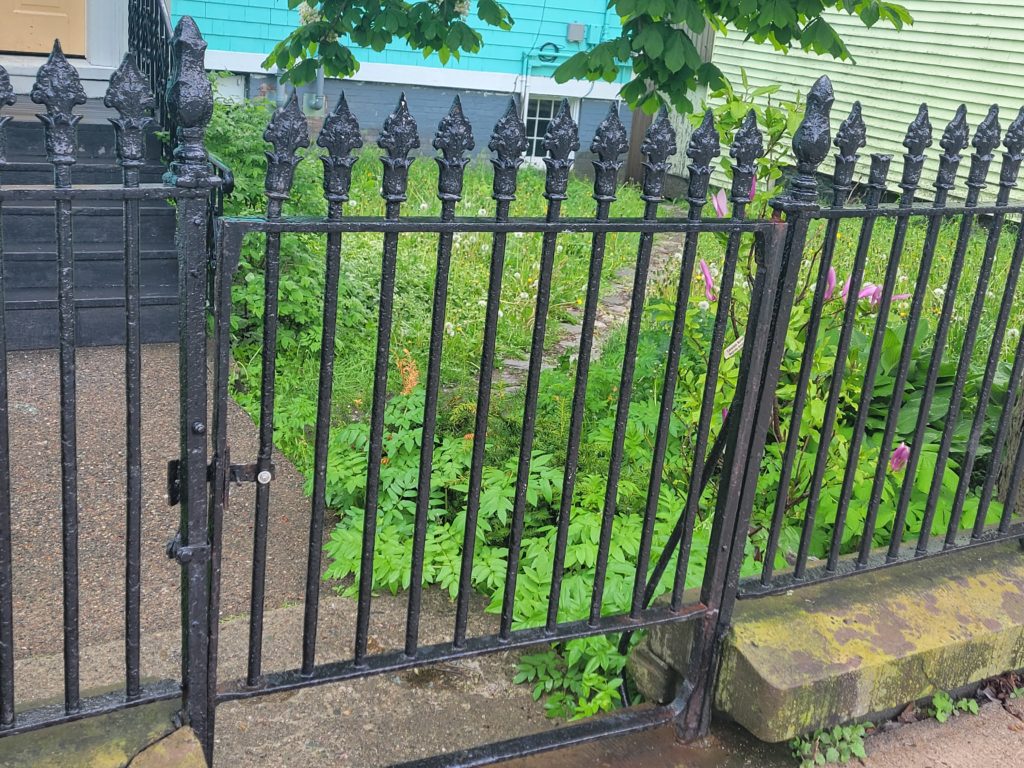
Germain St.
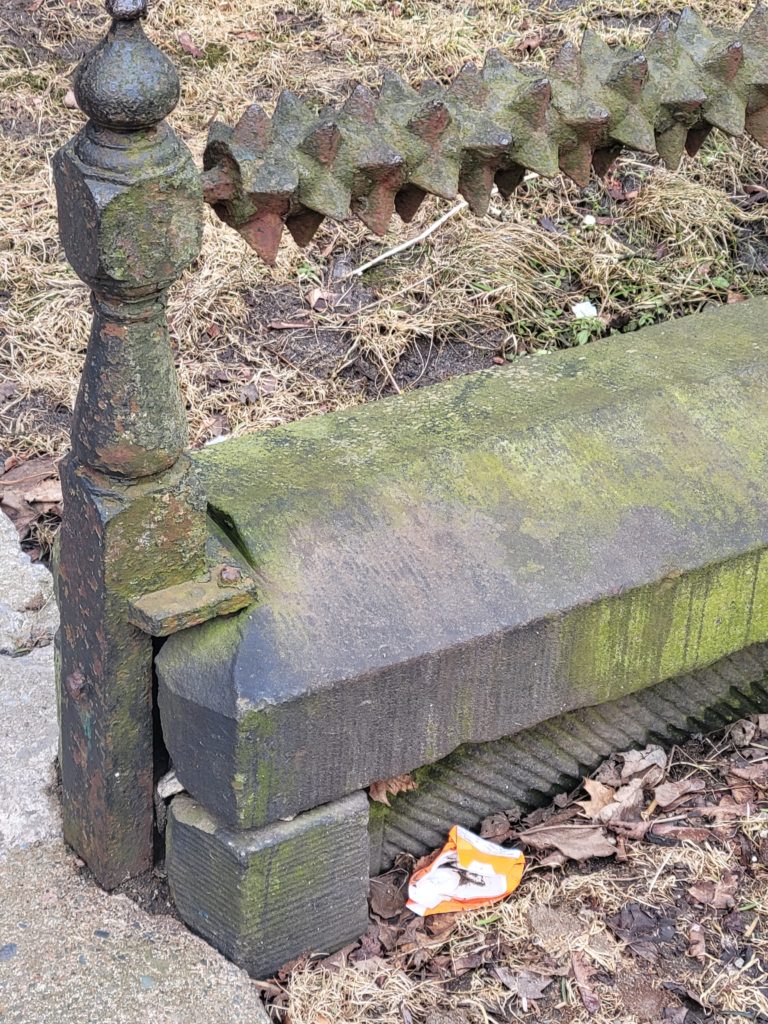
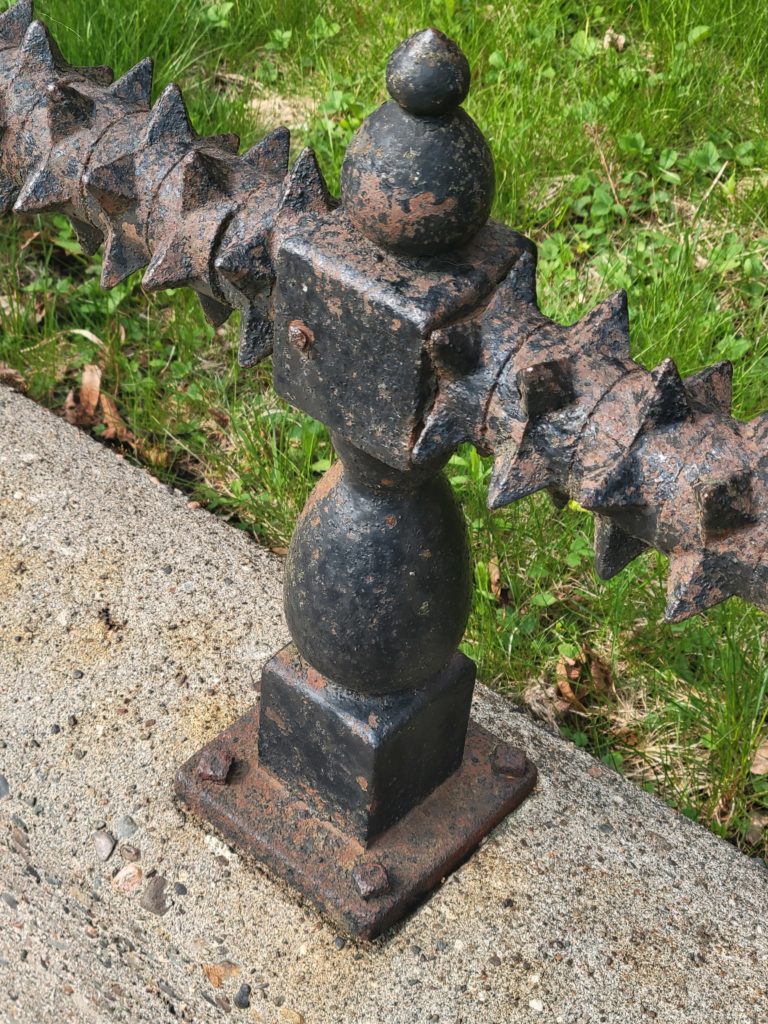
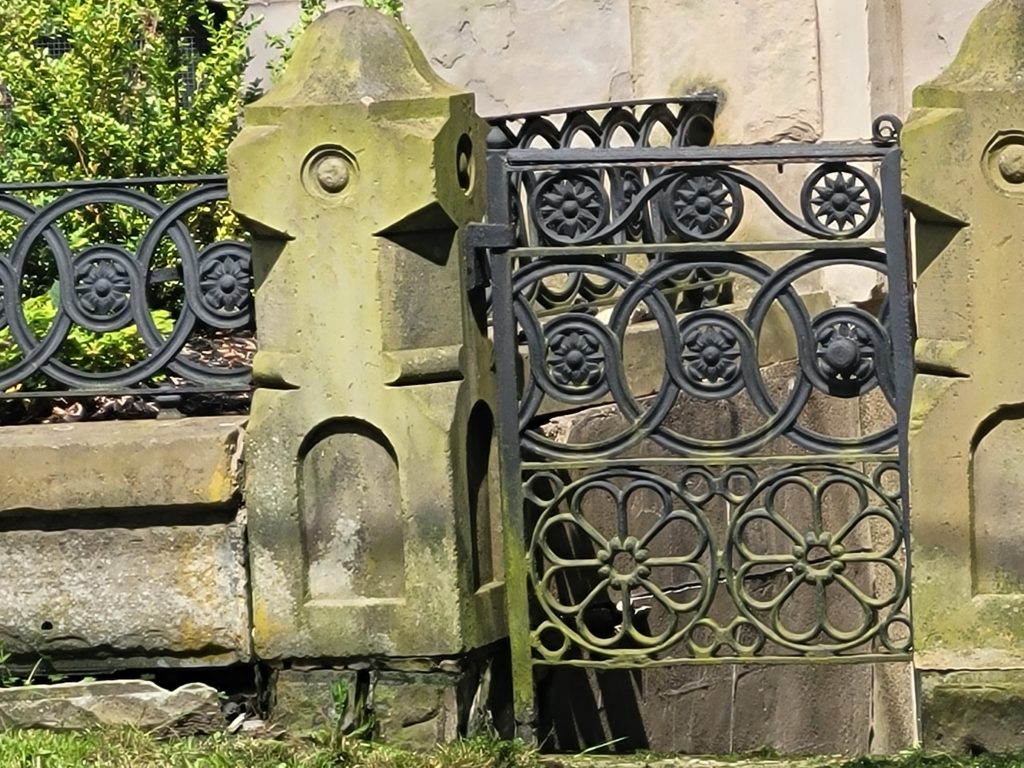
Douglas Ave.
(I love the laurel wreath motifs in these railings)
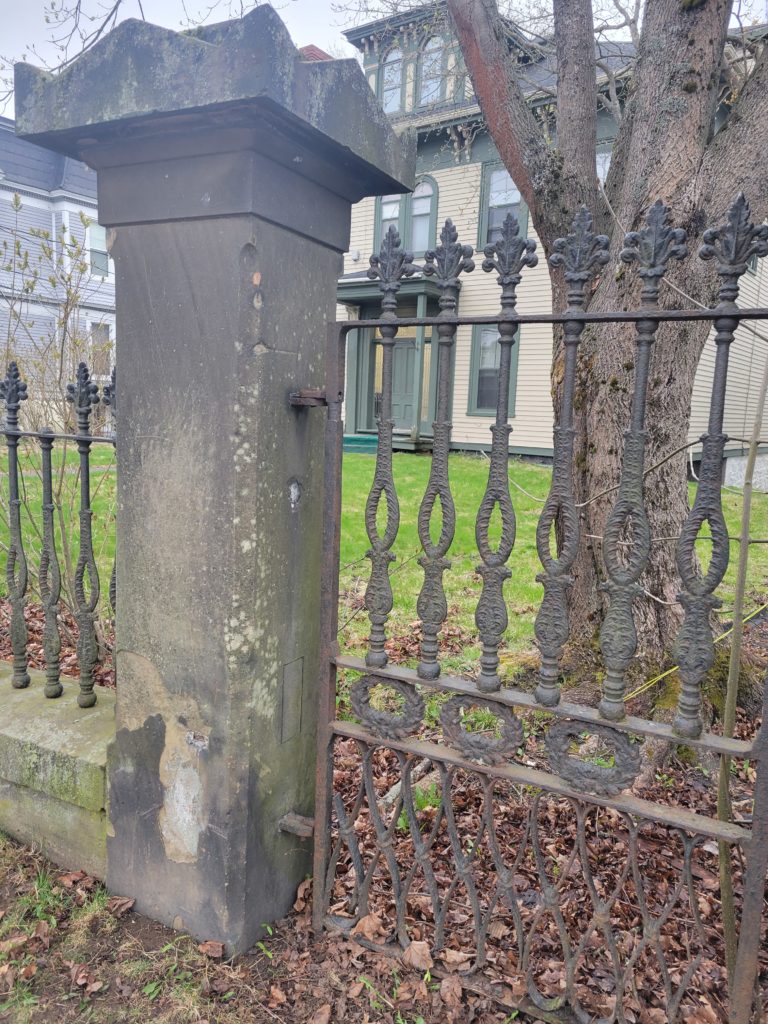
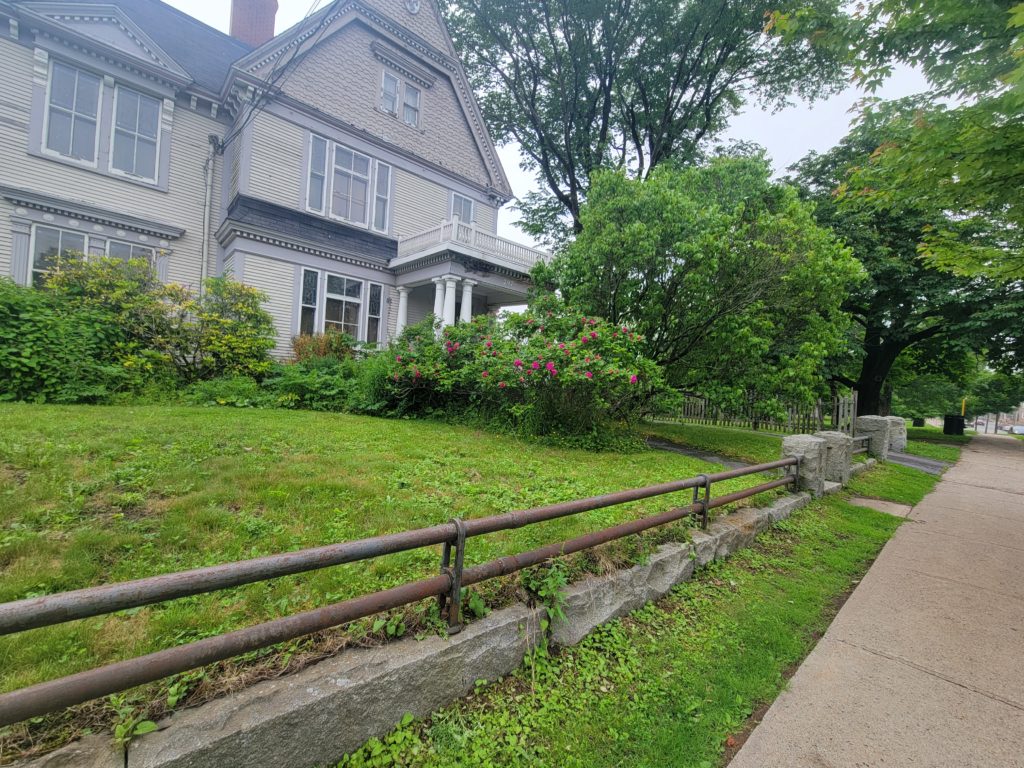
Hazen St.

King St. East
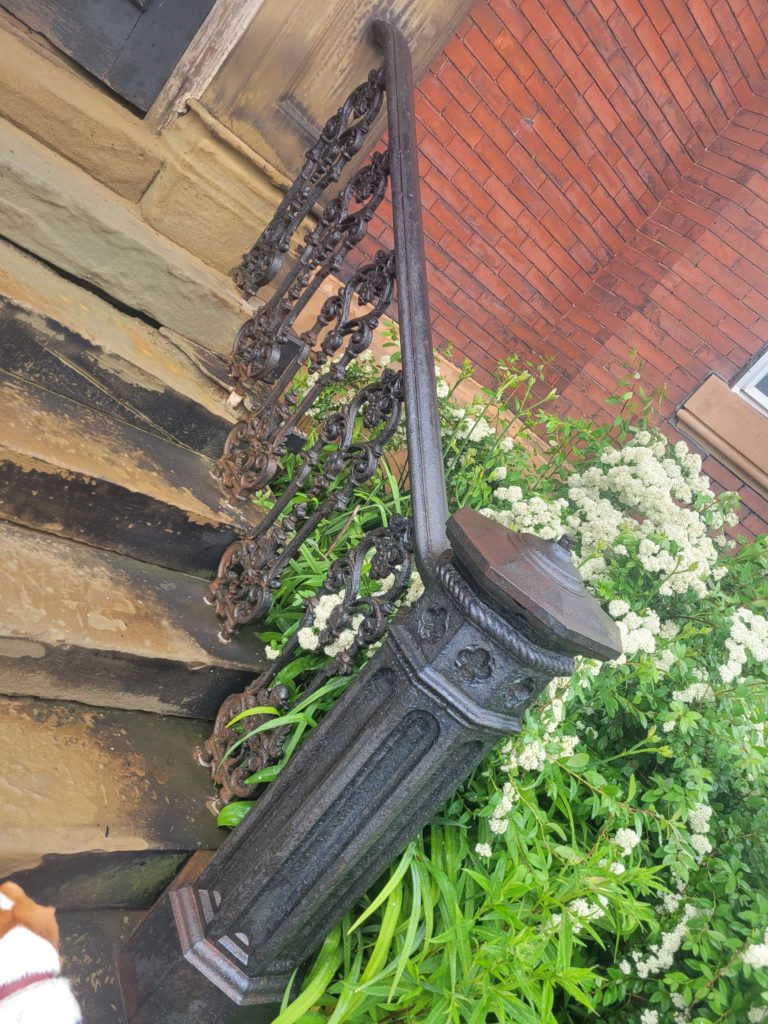
Lancaster Ave – west side
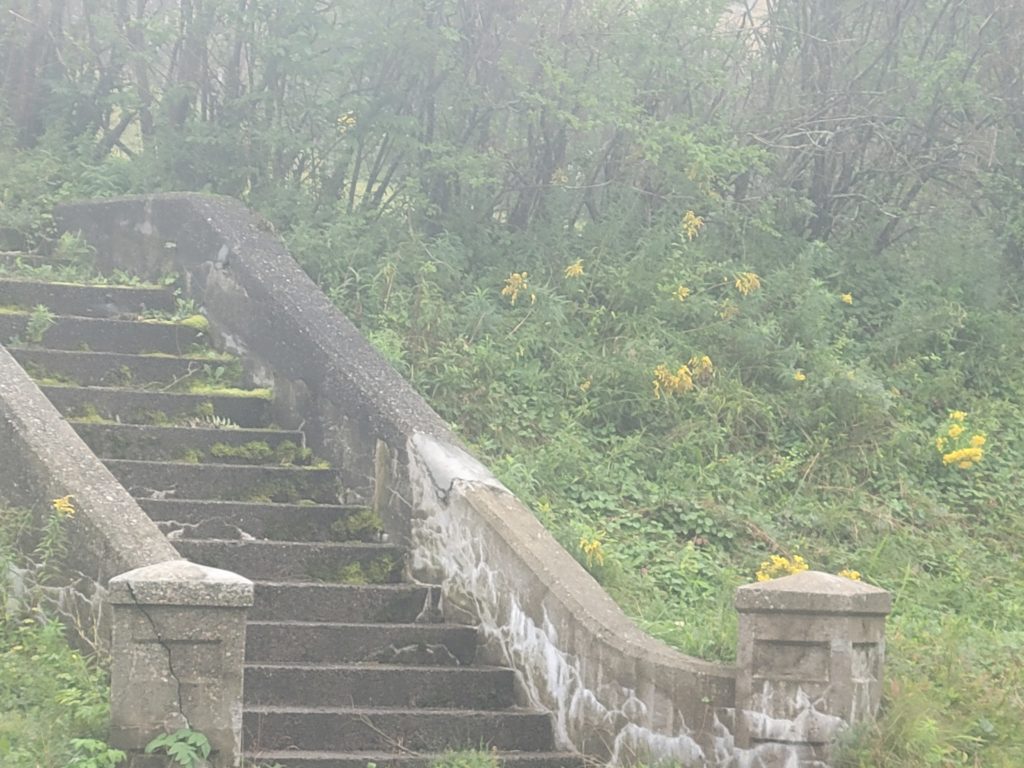
Maple St. – west side
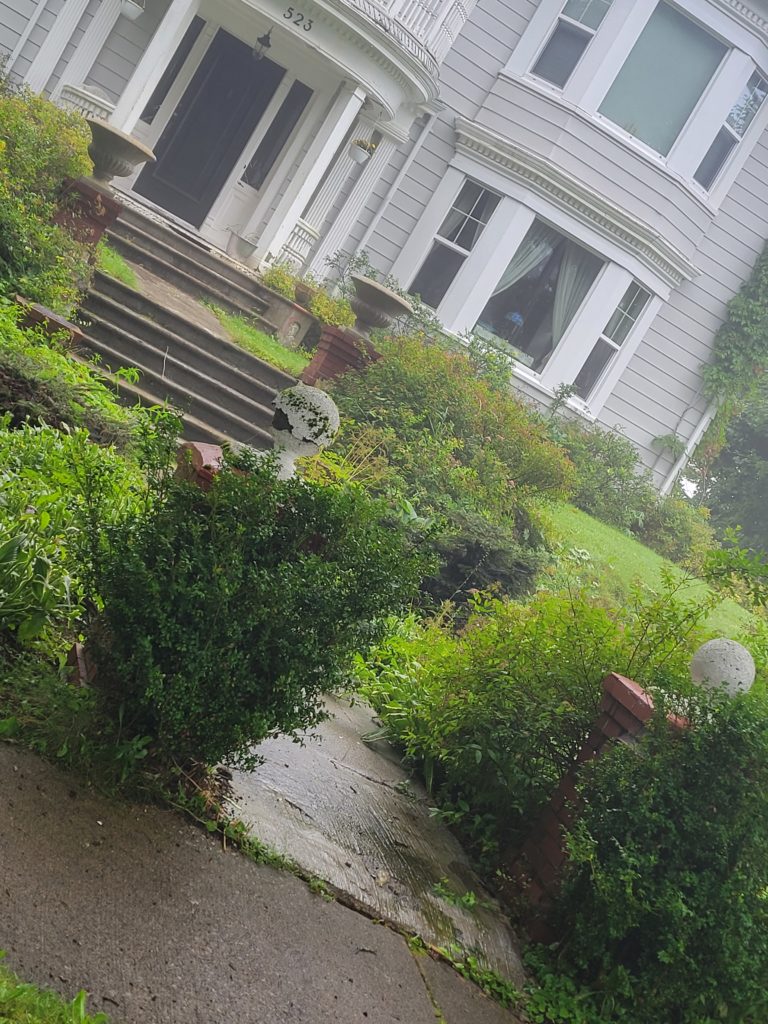
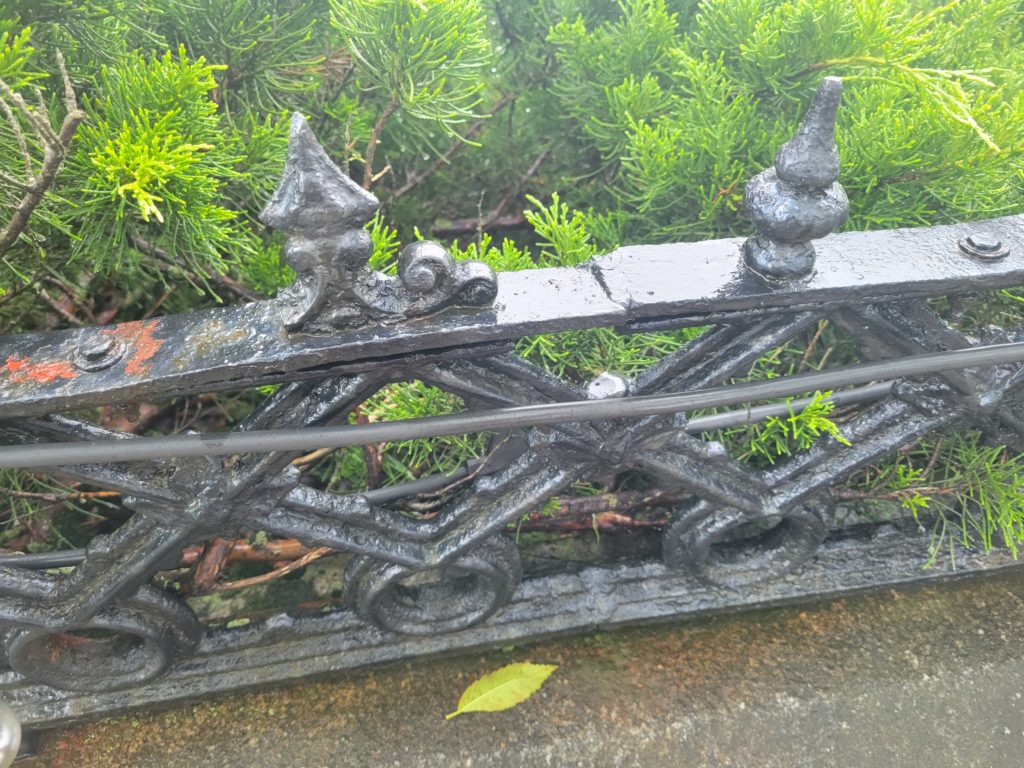
Orange St.

Princess St.
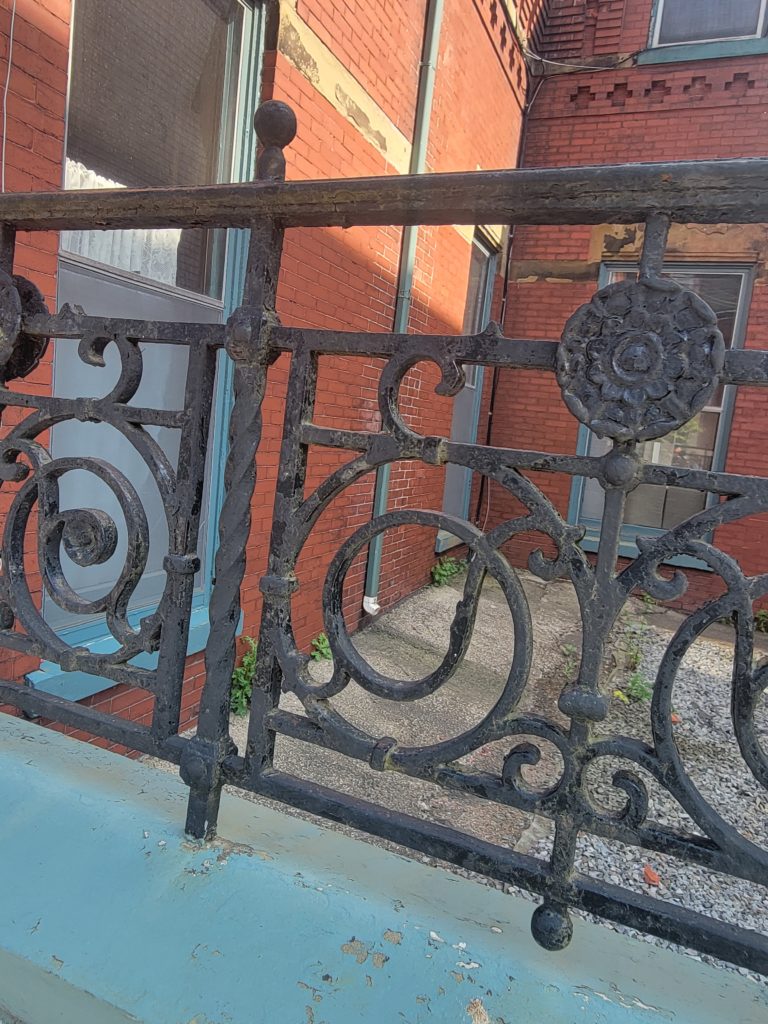
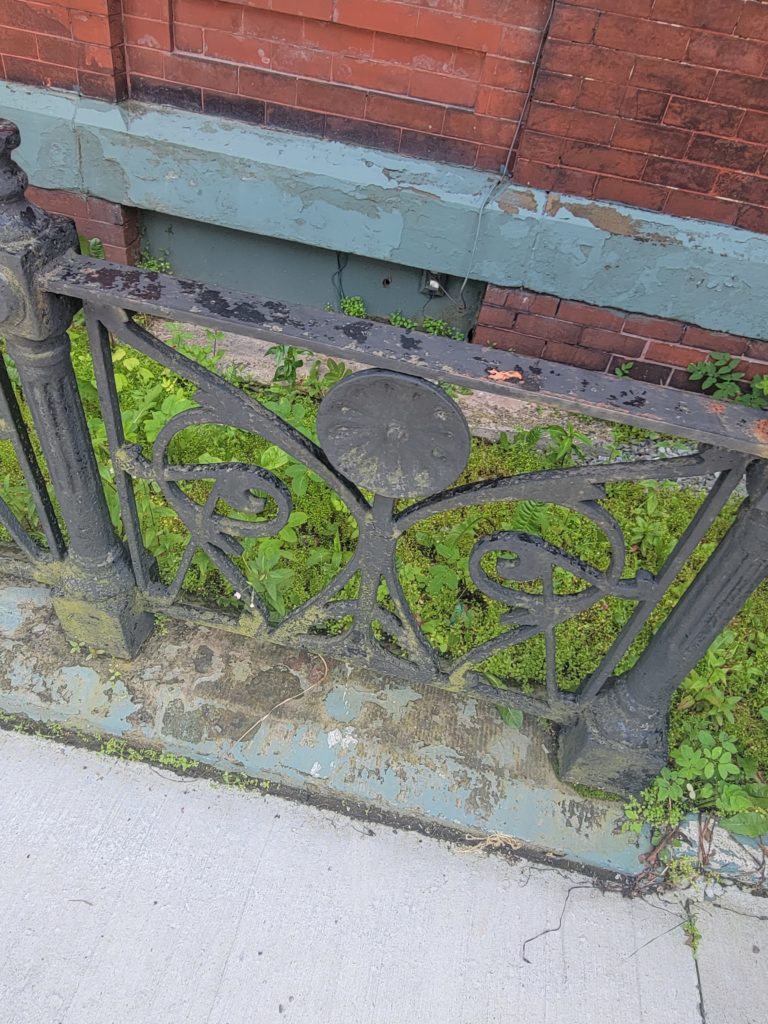
Seeley St. (the owner restored the railings and moved them from a demolished house to his and they are beautiful)
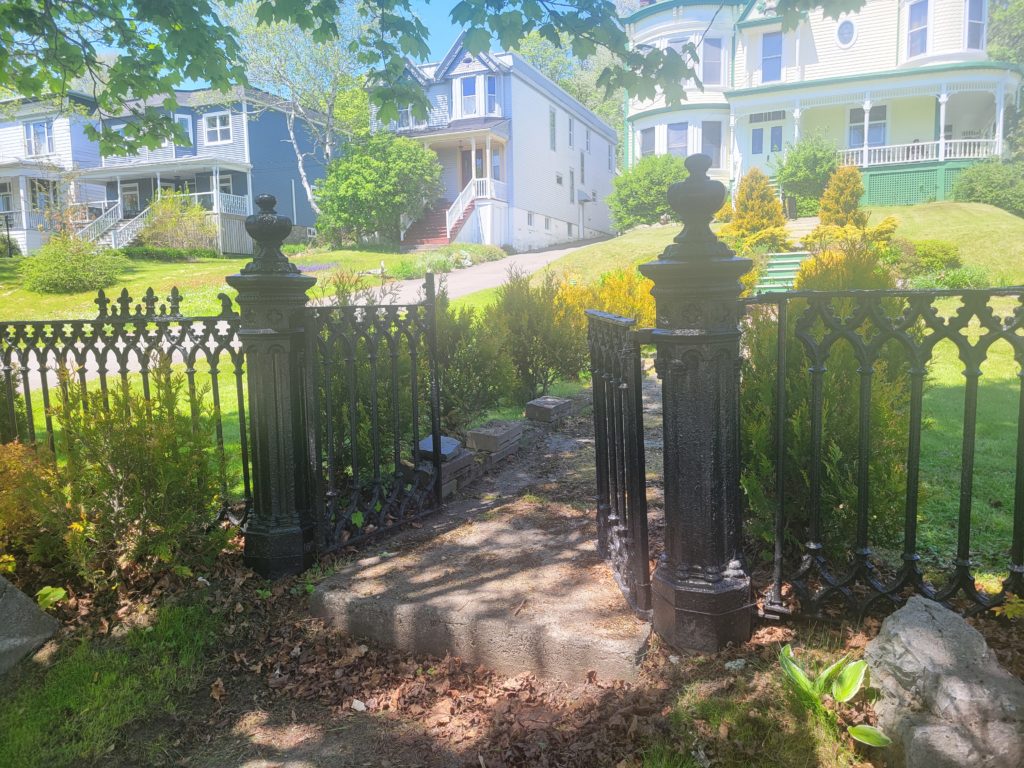
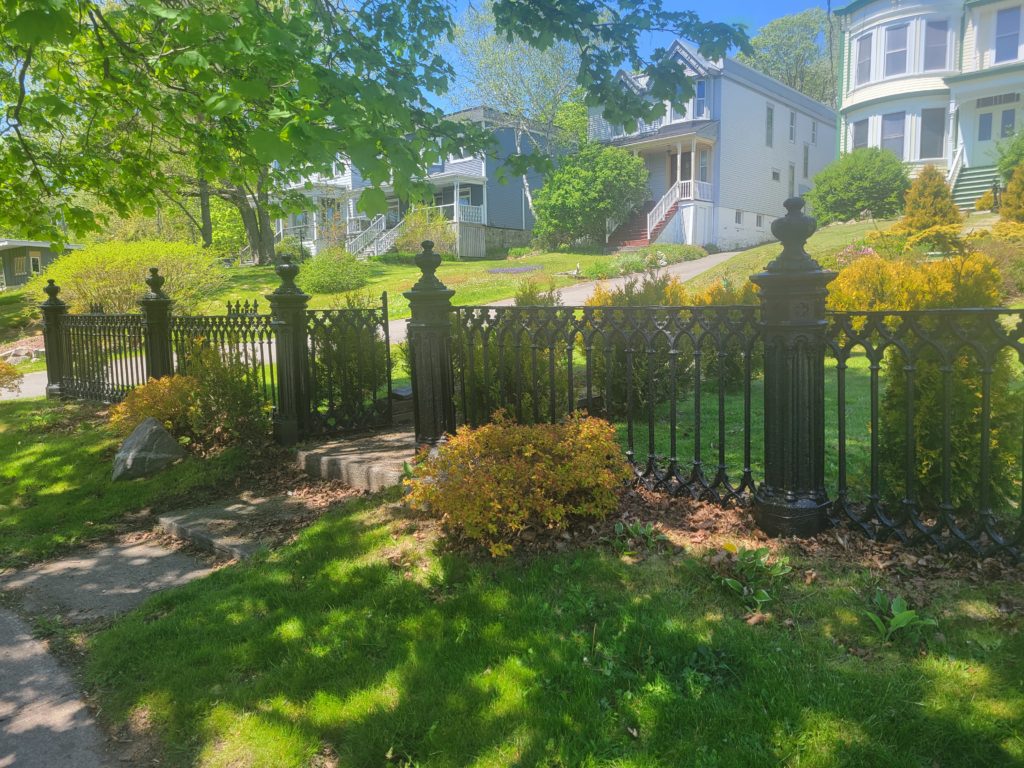
I do not think that all homes require fences. The Fenton Land and Building Company, responsible for streets like Alexandra and Demonts, did not use fences to my knowledge. Fenton created minimal lawns and planted beautiful maple trees lining the streets. See part of tree lined Champlain St. below.

On a slight aside, at our home we have a porch light and streetlights so we do not have the need for heavy lights out front. We are putting our mind to lighting out back and the Old House Guy has a great article on thoughtful exterior lighting choices.
I want to highlight one plant we have in our garden – rhubarb. The rhubarb comes from the award winning plants of my husband’s great-grandfather Hezekiah Tingle – see 1938 story about H Tingle and his rhubarb from the Daily Province. We named our plants Rhuby and Rhubarbara. Rhupert sadly did not make it.
Some gratuitous pics of a few garden favs – pre deer finding them.


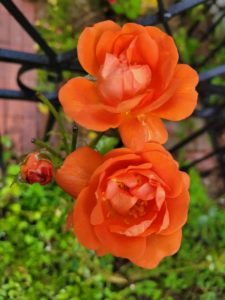

And my oddly fun sweetpea from 2022 that reminded me of a rose.
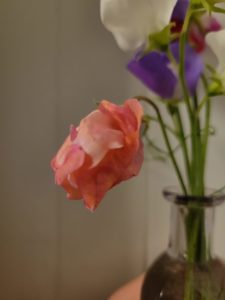
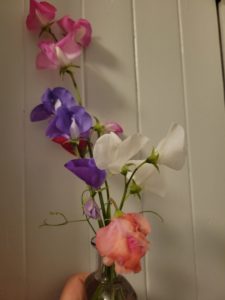
And finally, Nelson Alward, a talented west side stained glass artist made us this stepping stone for our memory garden for kittens we have fostered and lost. It incorporated the mackintosh rose found in our home along with some art deco motifs.
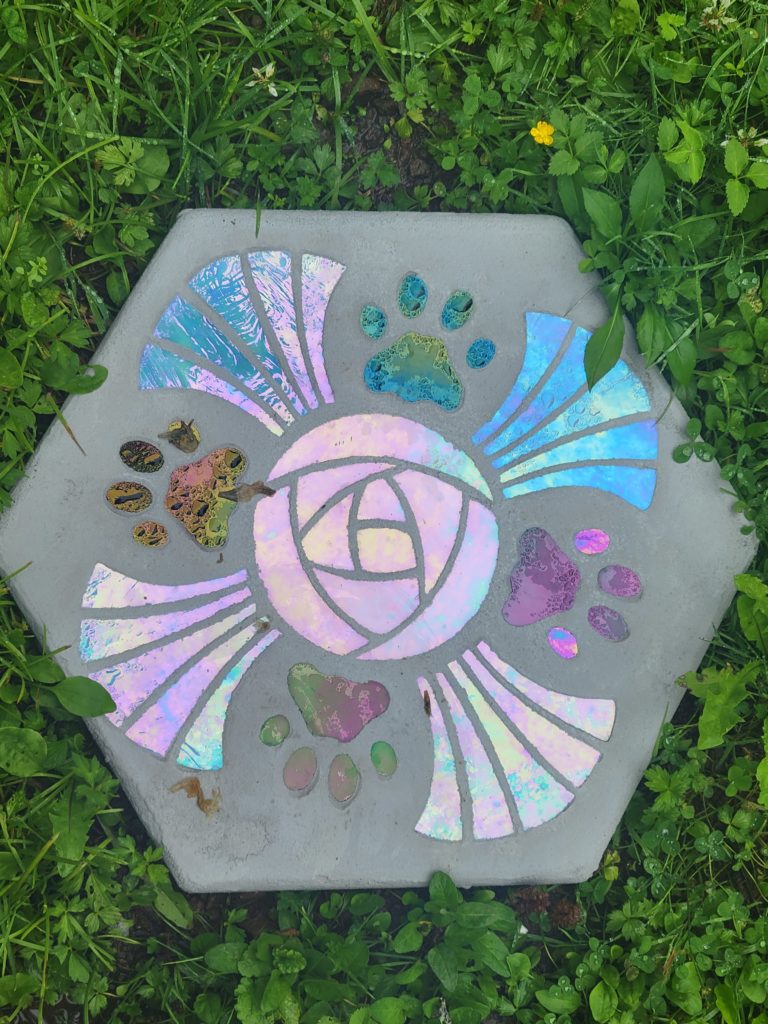
A final beauty:
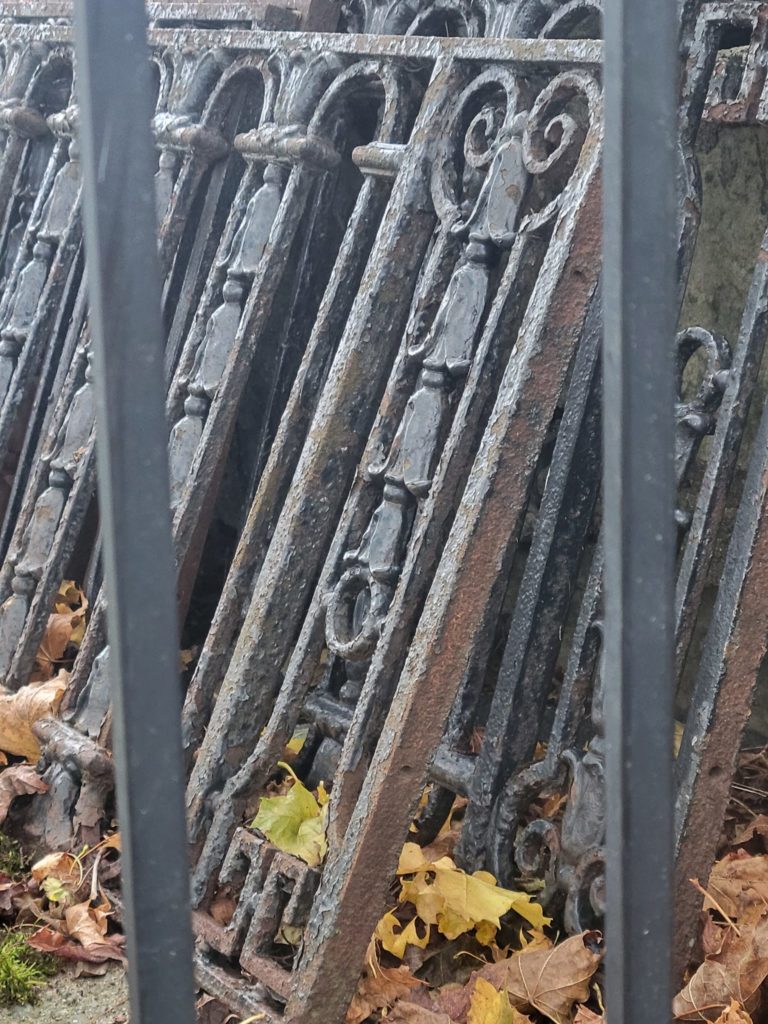
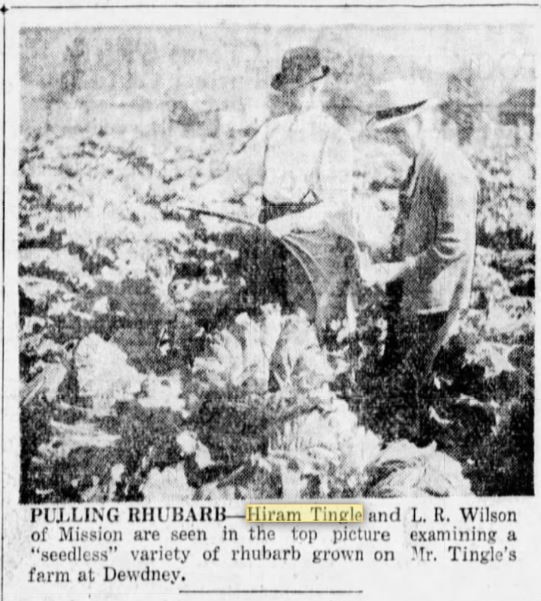
This is so cool! I love learning the history tidbits and seeing all of the historical pics around Saint John.
Thanks for the feedback!
A lovely read and a wonderful collection of pictures. Thank you for bringing this together and sharing.
thank-you very much, I plan to add more photos as I come across them
You are a true connoisseur of Heritage my cyber friend. Thanks for taking the time to compose and share this interesting read and the accompanying photos which are equally interesting rea
Thank-you so much – I hope you recognized some of these beauties from your time in the city.
These are fences, railings and posts, that I have gone by and never really looked at. Your clover lawn looks lovely. Thanks Carrie.
Thank-you so much! So much to see in Saint John.
I totally agree with your affection for fences. When I first visited Saint John in 1976 the wealth of cast iron fences and associated Victorian architecture made me very excited and jealous. In Halifax we had already lost much of that heritage. Photos I took on that visit are in this blog post: https://halifaxbloggers.ca/noticedinnovascotia/2017/01/iron-rich-saint-john/
And here are architecture photos from my 1976 visit. https://halifaxbloggers.ca/noticedinnovascotia/2017/01/learning-from-saint-john/
What a great site you have – thanks for the images and information. Much appreciated! And nice to e-meet someone who also loves historical landscaping.